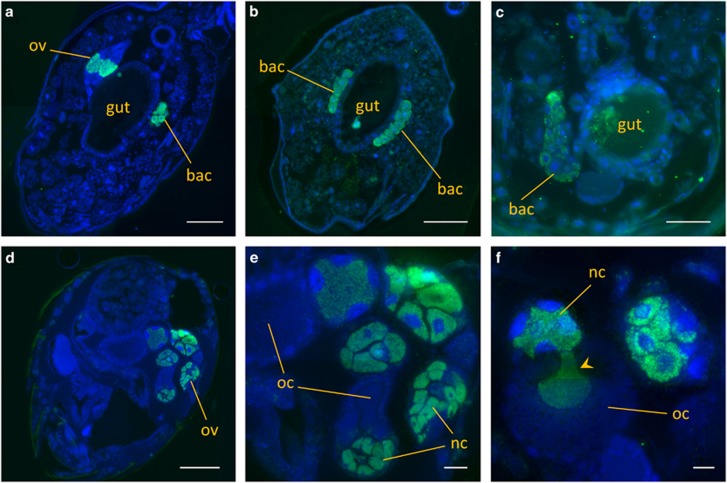Figure 4.
Localization of Westeberhardia in adults and pupae of C. obscurior (from Brazil, Ilhéus, 2009). Symbionts were stained in longitudinal sections through the abdomen with the Westeberhardia-specific probe Wcard2-Cy5 (green) and host cell nuclei were counterstained with DAPI (blue). (a–c) Localization of Westeberhardia in gut-associated bacteriomes (bac) in the pupae of a queen (a), a worker (b) and a male (c). Note the additional presence of symbionts in the queen ovaries (ov). (d) Section of the abdomen of an adult queen, with symbionts visible in the ovaries (ov). (e and f) Ovaries of an adult queen. Symbionts are mainly localized in the nurse cells (nc), but enter the developing oocyte (oc), probably during nurse cell depletion (arrowhead). Scale bars: 100 μm (a, b and d), 50 μm (c) and 20 μm (e and f).

